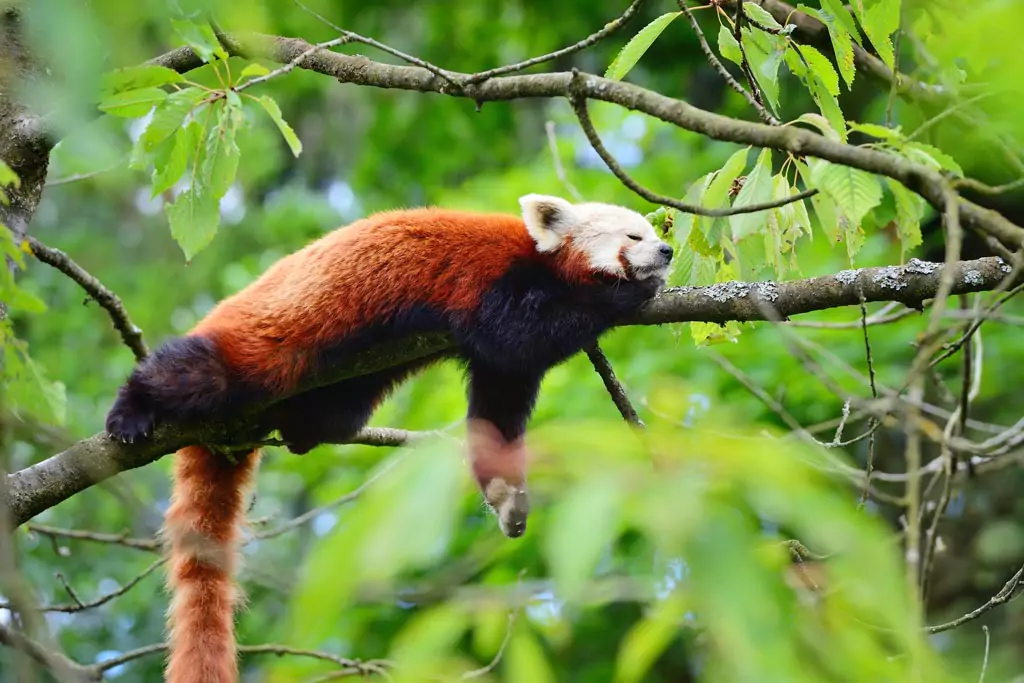The giant panda, an iconic symbol of wildlife conservation, is native to a few mountain ranges in central China. These black and white bears are known for their love of bamboo and their playful nature. But where exactly do these fascinating creatures reside? In this article, we'll delve deep into the habitats of pandas, the challenges they face, and the efforts being made to ensure their survival.

Key Takeaways:
- Giant pandas are native to a few mountain ranges in central China.
- They primarily reside in bamboo forests at elevations between 4,000 and 11,000 feet.
- Conservation efforts have led to an increase in panda populations in recent years.
- Pandas face challenges such as habitat loss and a limited diet.
The Natural Habitat of Pandas
Bamboo Forests
Giant pandas predominantly live in bamboo forests. These forests are located in the mountain ranges of China's Sichuan, Shaanxi, and Gansu provinces. The dense bamboo provides pandas with the primary source of their diet and offers them shelter.
https://www.youtube.com/watch?v=MIA8AKVZ0Yk
Elevation and Climate
Pandas prefer cool, wet climates and are typically found at elevations between 4,000 and 11,000 feet. The high elevations and misty, rainy weather of these regions provide the perfect conditions for bamboo to thrive, ensuring a steady food supply for the pandas.

Threats to Panda Habitats
Deforestation
One of the most significant threats to panda habitats is deforestation. As humans expand their settlements and clear forests for agriculture and other purposes, the natural habitats of pandas shrink, leading to a decrease in their population.
Infrastructure Development
Roads, railways, and other infrastructure developments can fragment panda habitats, making it challenging for them to find food and mate. This fragmentation also increases the risk of inbreeding, which can lead to genetic disorders in the population.
Climate Change
Climate change poses a significant threat to the bamboo forests where pandas live. As temperatures rise, bamboo's growth patterns can be disrupted, leading to a decrease in food availability for pandas.
Conservation Efforts

Panda Reserves
China has established over 60 panda reserves to protect these creatures and their habitats. These reserves cover more than 3.8 million acres and house over 65% of the wild panda population. Efforts are being made to connect these reserves, allowing pandas to roam freely and increase their genetic diversity.
https://youtube.com/watch?v=3szkFHfr6sA
Breeding Programs
Apart from reserves, there are breeding centers and zoos worldwide that focus on increasing the panda population. These centers study panda behavior, genetics, and reproduction to ensure a healthy and genetically diverse population.
International Collaboration
Countries around the world collaborate with China to protect the giant panda. Many zoos outside China have pandas on loan, and the funds generated from exhibiting these pandas are often used for conservation efforts.
https://youtube.com/watch?v=9ZffnvpS33k
The Role of Bamboo in a Panda's Life

Dietary Importance
Bamboo makes up about 99% of a panda's diet. These bears spend up to 14 hours a day eating bamboo. They consume both the leafy parts and the woody stems, depending on the season and availability.
Bamboo Flowering
Bamboo species flower infrequently, sometimes with intervals as long as 120 years. After flowering, the bamboo plant dies, leading to a sudden drop in food availability for pandas. This phenomenon forces pandas to migrate in search of food.
Adaptations
Pandas have evolved several adaptations to feed on bamboo. They have strong jaw muscles and broad, flat molars to crush bamboo. Their wrist bone has evolved into a pseudo-thumb, allowing them to grasp bamboo stalks efficiently.
Interesting Facts About Pandas
Camouflage and Communication
The giant panda's distinct black-and-white markings serve two main purposes: camouflage and communication. A significant portion of the panda, including its face, neck, belly, and rump, is white, which helps it blend into snowy habitats. In contrast, its arms and legs are black, aiding it in hiding in shaded areas. Learn more.

Unique Eyes
Unlike other bears, giant pandas have vertical slits for pupils, similar to domestic cats. This unique feature adds to their distinct appearance.
Protective Mothers
During the first month of a panda cub's life, mother pandas maintain almost constant contact with their offspring. The cub typically rests on the mother's front, shielded by her paw, arm, or head.
Climbing and Swimming Abilities
Giant pandas are adept swimmers and climbers. By the age of 5 months, panda cubs start learning how to climb, often practicing by clambering over their mothers.
https://youtube.com/watch?v=dqT-UlYlg1s
Dietary Habits
Bamboo is critical to a panda's diet, constituting about 99% of their intake. They spend between 10 to 16 hours a day feeding, primarily on bamboo. However, their digestive system is typical of a carnivore. As a result, the remaining 1% of their diet can include eggs, small animals, and carrion. Occasionally, pandas are also known to forage in farmland for foods like pumpkin, kidney beans, wheat, and even domestic pig food.
Unique Behaviors
Pandas sometimes perform handstands when urinating. To mark their territory with their scent, they climb a tree backward using their hind feet until they achieve a full handstand position. This behavior allows them to leave their scent higher up on the tree.

The Importance of Conservation
The giant panda is a testament to the success of conservation efforts. With the establishment of over 60 panda reserves in China and numerous breeding programs worldwide, the panda population has seen a steady increase in recent years. International collaboration has played a pivotal role in these efforts, with countries around the world partnering with China to protect this unique species.
Frequently Asked Questions
Why are pandas black and white?
The giant panda's black-and-white markings help it camouflage in its natural habitat. The white parts of its body allow it to blend into snowy environments, while the black regions help it hide in shaded areas.

How much bamboo does a panda eat in a day?
A panda can consume between 26 to 84 pounds of bamboo daily, depending on the type and part of the bamboo they are eating.
Are pandas solitary animals?
Yes, pandas are generally solitary creatures. They have a heightened sense of smell that they use to avoid other pandas and to find mates during the breeding season.





